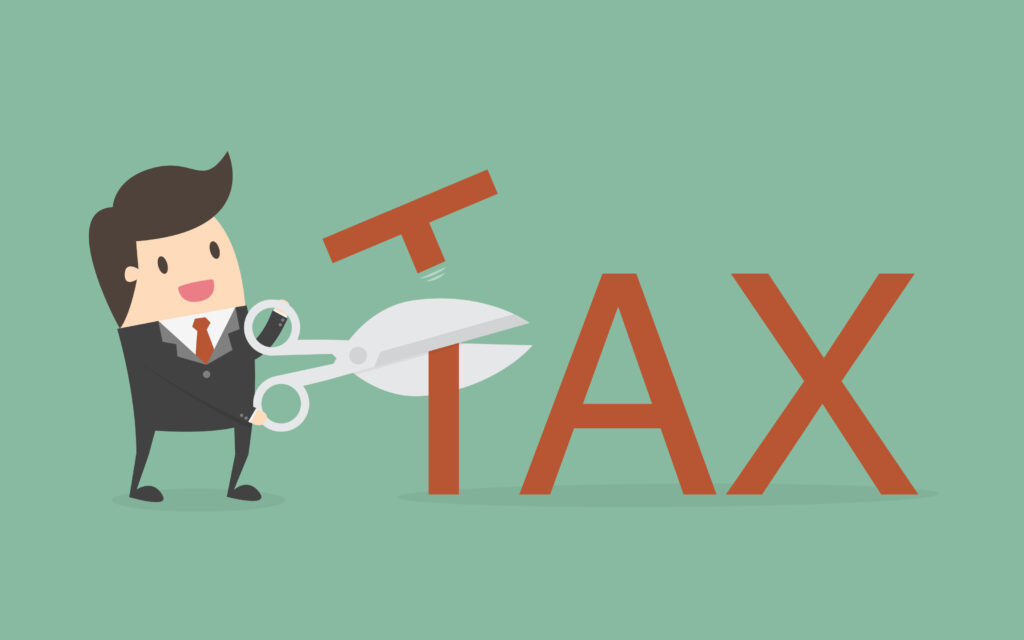
Table of Contents
How do income tax brackets work?
Understanding Tax Brackets: Tax brackets are ranges of income levels to which different tax rates apply. In progressive tax systems like many countries, including the United States, as income increases, the percentage of income paid in taxes also increases. These tax rates are typically structured into tiers or brackets.
Progressive Taxation: The concept of progressive taxation means that higher income individuals pay a higher percentage of their income in taxes than lower income individuals.
Marginal Tax Rates: Each tax bracket has an associated marginal tax rate. This is the tax rate applied to the last dollar earned within that range. It is important to note that the marginal tax rate applies only to income within that specific bracket, not the entire income.
Example: For example, in a hypothetical tax system, the first $10,000 of income might be taxed at a 10% rate, the next $20,000 might be taxed at a 15% rate, and so on. Kind. If someone earns $30,000, they must pay 10% on the first $10,000 and 15% on the next $20,000. So, their total tax bill will be a combination of these rates.
Tax Planning: It is important for tax planning to understand how tax brackets work. For example, individuals may pursue strategies to reduce their tax burden by keeping their income within a lower tax bracket or by using deductions, credits, and other tax incentives to reduce their overall taxable income.
Overall, understanding how income tax brackets work empowers individuals to make informed financial decisions and optimize their tax situation within the framework of the tax system.
What is the marginal tax rate?

Definition: The marginal tax rate is the tax rate that applies to the last dollar of income earned. It is important to understand that marginal tax rates apply only to that portion of income that falls within a specific tax bracket.
Progressive Tax System: Marginal tax rates are a key feature of progressive tax systems, where tax rates rise as income increases. In such systems, tax rates are structured into brackets, with each bracket having its own marginal tax rate.
Example: Let’s say a country has three tax brackets: 10% for income up to $10,000, 15% for income between $10,001 and $50,000, and 20% for income above $50,000. . If someone earns $60,000, their marginal tax rate is 20%, but it only applies to the portion of their income that is more than $50,000. The first $10,000 is taxed at 10%, the next $40,000 is taxed at 15%, and the remaining $10,000 is taxed at 20%.
Implications: It is important for individuals to understand marginal tax rates to accurately calculate their tax liabilities and plan their finances. This helps them understand how additional income or deductions will affect their overall tax burden.
Tax Planning: Knowledge of marginal tax rates can inform tax planning strategies. For example, individuals may consider strategies to reduce their taxable income or take advantage of deductions and credits to reduce the portion of their income subject to higher marginal tax rates.
Policy Discussions: Marginal tax rates often feature prominently in policy discussions, especially during debates about tax reform. Changes in marginal tax rates can have significant effects on government revenues, income distribution, and economic behavior.
What is an effective tax rate?
Definition: The effective tax rate is the percentage of total income or profits that a person or entity pays in taxes after accounting for all deductions, credits, exemptions, and other adjustments. Unlike the marginal tax rate, which applies only to the last dollar of income, the effective tax rate provides a more comprehensive view of the overall tax liability.
Calculation: To calculate the effective tax rate, the total amount of taxes paid is divided by the total taxable income or profits. The resulting percentage represents the average rate at which income is taxed.
Incorporating tax laws: The effective tax rate takes into account various provisions of the tax code that affect taxable income, such as deductions for mortgage interest, charitable contributions and business expenses. These deductions reduce taxable income, which lowers the effective tax rate.
Comparison with marginal tax rate: While the marginal tax rate indicates the tax rate applied to the last dollar earned, the effective tax rate reflects the overall tax burden relative to total income or profits. Depending on the tax situation of the individual or entity, the effective tax rate may be lower or higher than the marginal tax rate.
Understanding Tax Efficiency: Analyzing the effective tax rate can provide insight into tax efficiency and financial planning. By identifying opportunities to maximize deductions and credits, individuals and businesses can lower their effective tax rates and retain more of their income.
Policy implications: Policy discussions often consider the effective tax rate when evaluating the fairness and efficiency of the tax system. The goal of a progressive tax system may be to achieve a more equitable distribution of the tax burden by ensuring that effective tax rates increase with income.
Business Considerations: For businesses, understanding the effective tax rate is important for evaluating profitability, investment decisions, and strategic planning. It influences decisions related to corporate structure, expense management and tax compliance.
In short, the effective tax rate provides a comprehensive measure of an individual’s or entity’s tax burden, encompassing all relevant aspects of the tax code. It is a valuable tool for financial planning, tax policy analysis and business decision making.
How to reduce taxes owed

Tax Planning Strategies: Tax planning involves making strategic decisions to legally reduce the amount of taxes owed. This can be achieved through various strategies aimed at optimizing deductions, credits, exemptions and other tax benefits.
Maximizing Deductions: Deductions reduce taxable income, thereby reducing the amount of income subject to taxation. Common deductions include mortgage interest, property taxes, medical expenses, charitable contributions, and business expenses. Taxpayers can maximize deductions by keeping accurate records and taking advantage of all eligible deductions.
Utilization of tax credits: Taxpayers should identify and claim all available tax credits for which they qualify, such as the Earned Income Tax Credit, Child Tax Credit, Education Credit, and Energy Efficiency Credit.
Retirement Savings: Contributing to retirement accounts such as 401(k) plans, traditional IRAs and Roth IRAs can reduce taxable income and reduce tax liabilities.
Employer Benefits: Taking advantage of employer-sponsored benefits, such as flexible spending accounts (FSAs), health savings accounts (HSAs), and commuter benefits, can provide tax savings. These accounts allow employees to set aside pre-tax dollars for qualified expenses, while reducing taxable income.
Timed income and expenses: Taxpayers can strategically time the receipt of income and payment of expenses to minimize taxes. For example, deferring income to the next tax year or accelerating deductible expenses into the current year can help manage tax liabilities.
Investment Strategies: Investing in tax-efficient investment vehicles, such as municipal bonds or tax-advantaged retirement accounts, can reduce taxable investment income. Additionally, tax-loss harvesting involves selling investments at losses to offset capital gains and reduce taxes owed.
Seeking professional advice: Tax laws are complex and subject to change, so seeking guidance from tax professionals such as a certified public accountant (CPA) or tax attorney can help individuals and businesses effectively navigate tax planning strategies.
In short, minimizing taxes owed involves proactive planning and implementation of various strategies to optimize tax benefits and minimize tax liabilities while complying with applicable tax laws and regulations. Tax bracket: The federal income tax system in the United States is progressive, meaning that tax rates increase as income increases. This system is organized into tax brackets, each representing a range of taxable income subject to a specific tax rate.
Federal income tax rates and brackets
Tax Bracket: The federal income tax system in the United States is progressive, meaning that tax rates increase as income increases. This system is organized into tax brackets, each representing a range of taxable income subject to a specific tax rate.
Marginal Tax Rates: Within each tax bracket, individuals are subject to the marginal tax rate, which is the tax rate applied to the last dollar of income within that bracket. As income increases and falls into a higher tax bracket, the marginal tax rate also increases.
Standard Deduction and Tax Credits: Before tax brackets apply, individuals can reduce their taxable income through deductions, such as the standard deduction or itemized deductions, and tax credits, which apply directly to taxes owed. Let’s reduce the quantity.
Tax Rates for Different Filing Statuses: Different tax brackets and rates for individuals filing as single, married filing jointly, married filing separately and head of household in the federal income tax system Are. Each filing status has its own set of tax brackets and standard deductions.
Recent Tax Changes: Tax rates and brackets may change over time due to legislation passed by Congress and signed by the President. For example, the Tax Cuts and Jobs Act of 2017 made significant changes to tax rates and brackets, lowering tax rates for many individuals and adjusting the income limits for tax brackets.
Tax Planning and Compliance: Understanding federal income tax rates and brackets is essential for tax planning and compliance. Individuals and tax professionals use this information to estimate tax liabilities, optimize deductions and credits, and ensure accurate tax return preparation.
State Income Taxes: In addition to federal income taxes, many states impose their own income taxes, which can have different tax rates and brackets. Taxpayers should be aware of both federal and state tax obligations when filing their tax returns.
In short, the federal income tax rates and brackets form the framework for calculating the tax liabilities of individuals in the United States. For effective tax planning and compliance, it is important to understand how tax brackets work and how marginal tax rates apply at different levels of income.
2023 tax brackets and income tax rates

2024 tax brackets and income tax rates


